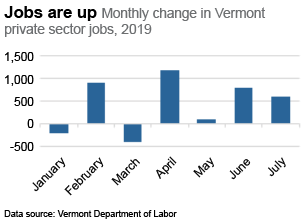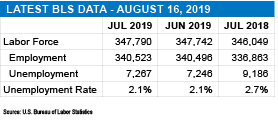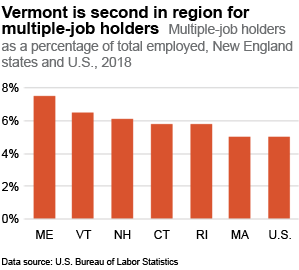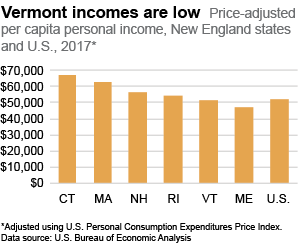Full-time work grows but buying power languishes
 Private employers added 600 jobs in July. So far this year, the private sector has created 3,000 new jobs, showing growth for the last four straight months. Unemployment held steady at 2.1 percent for the third straight month, and Vermont’s labor force has increased every month this year.
Private employers added 600 jobs in July. So far this year, the private sector has created 3,000 new jobs, showing growth for the last four straight months. Unemployment held steady at 2.1 percent for the third straight month, and Vermont’s labor force has increased every month this year.
Less job juggling
The share of Vermont workers with two or more jobs ranked second highest in New England in 2018. Although high for New England, the rate of Vermont workers with multiple jobs—6.5 percent, or 22,000 people—was the state’s lowest since reporting began in 1994. Falling unemployment since 2010 may be increasing the hours available to employees, making one job enough. The number of part-time workers looking for full-time work also has declined.
Purchasing power
Vermonters had the second-lowest buying power in New England in 2017, according to new data from the Bureau of Economic Analysis (BEA). The BEA calculates a state’s average income and adjusts it for the price of goods and services in that state as a measure of relative purchasing power. Vermont’s prices were lower than three other New England states’ in 2017, so lagging average income is responsible for reduced buying power. Personal income includes wages, Social Security and government benefits, interest and dividends, plus other sources of income.
